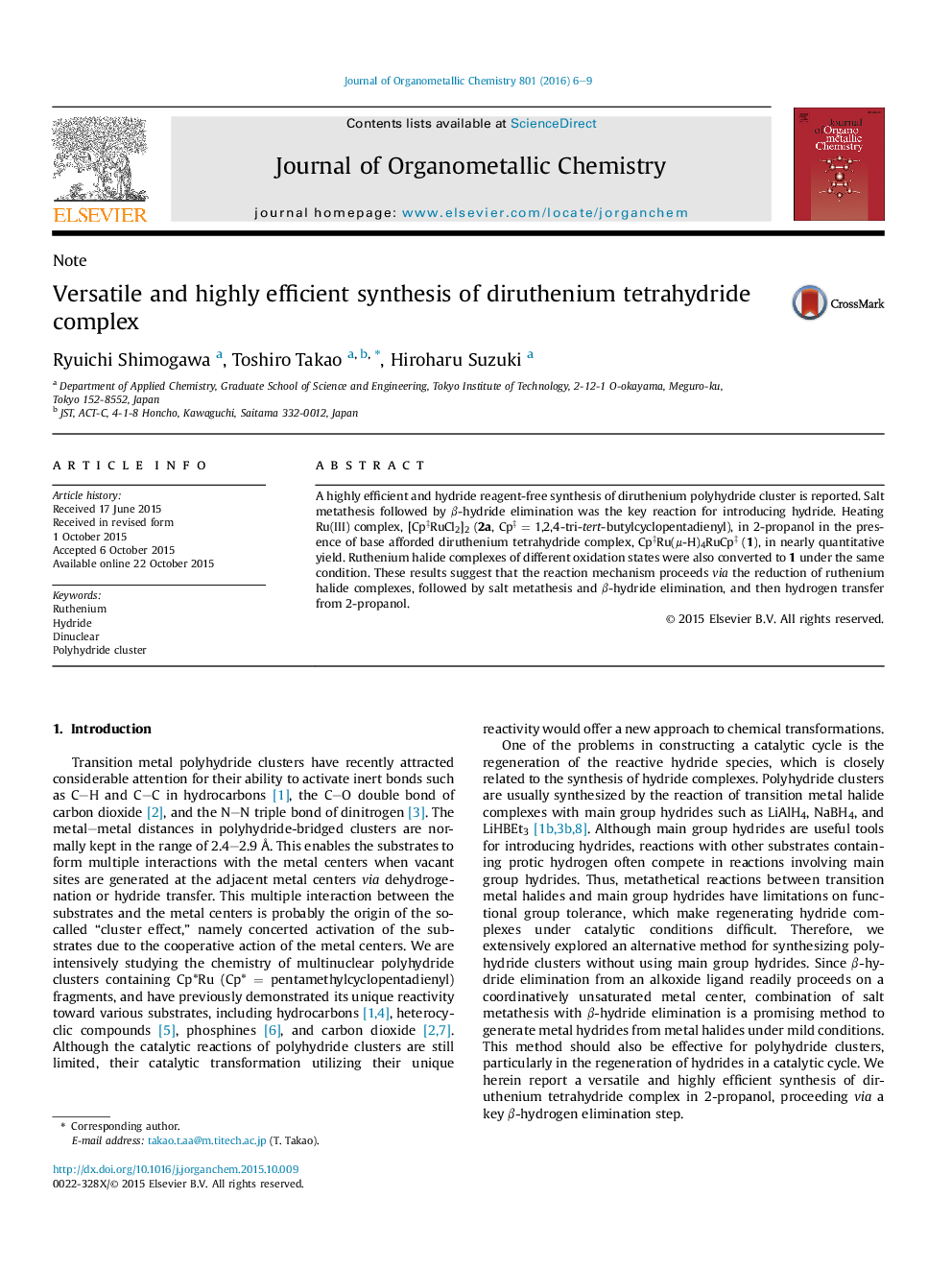| Article ID | Journal | Published Year | Pages | File Type |
|---|---|---|---|---|
| 1323079 | Journal of Organometallic Chemistry | 2016 | 4 Pages |
•A diruthenium tetrahydride complex was efficiently synthesized by a simple procedure.•Treatment of chloride complexes with NaOH in the presence of 2-propanol led to the introduction of hydrides.•Salt metathesis followed by the β-hydrogen elimination of 2-propoxide is the key step of the formation of hydride.•Various chloride complexes of Ru(II), Ru(III), and Ru(IV) can be used as a starting material.
A highly efficient and hydride reagent-free synthesis of diruthenium polyhydride cluster is reported. Salt metathesis followed by β-hydride elimination was the key reaction for introducing hydride. Heating Ru(III) complex, [Cp‡RuCl2]2 (2a, Cp‡ = 1,2,4-tri-tert-butylcyclopentadienyl), in 2-propanol in the presence of base afforded diruthenium tetrahydride complex, Cp‡Ru(μ-H)4RuCp‡ (1), in nearly quantitative yield. Ruthenium halide complexes of different oxidation states were also converted to 1 under the same condition. These results suggest that the reaction mechanism proceeds via the reduction of ruthenium halide complexes, followed by salt metathesis and β-hydride elimination, and then hydrogen transfer from 2-propanol.
Graphical abstractFigure optionsDownload full-size imageDownload as PowerPoint slide
